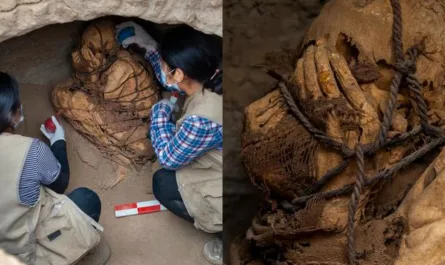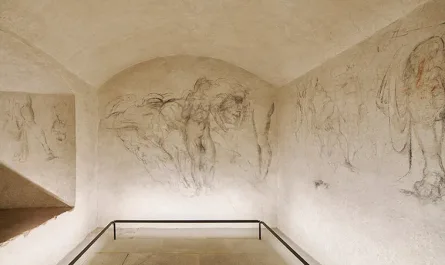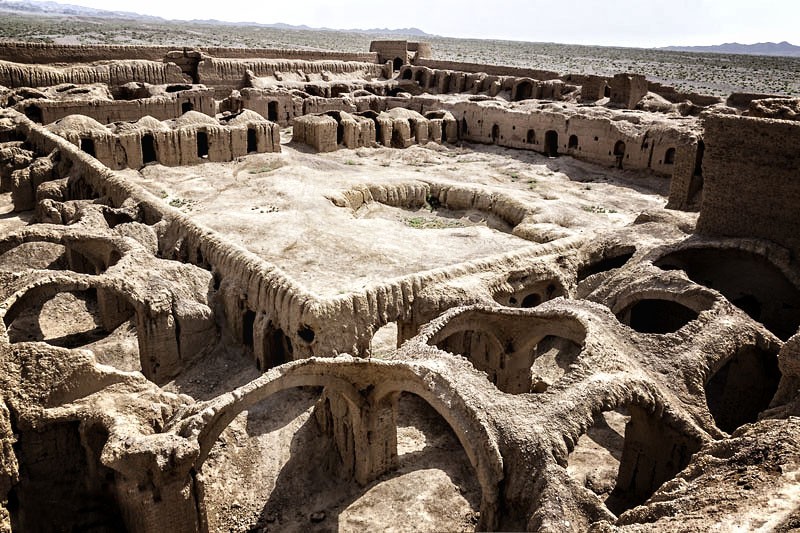Sea Monster Skeleton in Jeju’s Coastal Cave: Mythic Siren or Marine Hoax?
In the volcanic caves along South Korea’s Jeju Island near the iconic Hyeopjae Beach, divers have reportedly uncovered a skeleton with a fish-like tail and gill-like structures, buried in a coastal cavern tied to Haenyeo diving traditions. Preserved by the sea’s cold, saline depths, this relic evokes myths of “jaladebi” sea spirits, sparking intrigue: Did it swim Jeju’s waters, revered by ancient fishermen? What sealed it in this cave, part of Jeju’s UNESCO-recognized geology? Why the silence from authorities? This find, amid Jeju’s 1,500 fish species, challenges biology, hinting at a lost creature erased from folklore. Yet, hoaxes like the 2012 Bulgaria “mermaid” skeleton, debunked as a fabricated composite, urge caution. Could it be a mythic relic, a misidentified dugong fossil, or a crafted tale? Jeju’s waves demand answers, but the truth may lie in legend rather than bone.

The Discovery: A Dive into Legend
Jeju Island, a UNESCO World Heritage Site for its volcanic landscapes, is dotted with lava tubes and caves formed 200,000–300,000 years ago from Hallasan’s eruptions. Hyeopjae Beach, in Hallim-eup, is famed for its white sands and black basalt, adjacent to Gujeong Beach and lava caves like Hyeopjaegul and Ssangyonggul in Hallim Park. These caves, part of the Geomun Oreum Lava Tube System, are horizontal tunnels with stalactites and unique formations, preserved at 17–18°C year-round.
The “discovery” emerged in viral social media posts and travel blogs, describing divers finding a skeleton in a coastal cave near Hyeopjae during a 2023 or 2024 exploration. The remains, allegedly 1.5–2 meters long, featured a humanoid upper body with gill slits and a fish tail, preserved by saline water. Tied to Haenyeo—Jeju’s female free divers who harvest abalone and seaweed—this tale blends folklore with the island’s diving heritage. However, no official reports from Jeju’s cultural heritage authorities or the Haenyeo Museum confirm it, suggesting a modern fabrication or misidentification.
Jeju’s Mythic Waters: The Jaladebi and Sea Spirits
Jeju’s folklore brims with sea deities, rooted in shamanism and the island’s isolation. The “jaladebi” or “jalmot,” often translated as “sea woman” or “mermaid,” appears in oral traditions as benevolent spirits aiding fishermen or luring them to watery graves. In the Bonpuli epics, the Sea God (Yowang) and his daughters, including sirens, guard the waters, with rituals like Yeongdeunggut honoring Yeongdeung Halmang, the wind goddess who brings spring bounty. Haenyeo, diving up to 20 meters without gear, embody these myths, performing rites at shrines like Haesindang to ensure safe hauls.
The skeleton’s “siren” features align with these tales—gill-like slits evoking the Sea Goddess or jaladebi, protectors or temptresses in Jeju’s cosmology. Yet, no historical records or archaeological finds support a siren skeleton; Jeju’s caves yield volcanic fossils, not mythical hybrids. The story may stem from misinterpretations of dugong or sea cow bones, once abundant but now rare, or fabricated for tourism, similar to the 2012 Bulgarian “mermaid” hoax—a composite of fish and primate parts debunked by Snopes.
Geological and Biological Reality
Jeju’s caves, like Manjanggul and Yongcheondonggul, are lava tubes with unique formations—stalactites, lava rolls, and rare carbonate speleothems—but no evidence of humanoid-fish skeletons. Fossils in these sites include marine life from 25 million years ago, but nothing resembling a siren. The “gill-like structures” could be misidentified fish bones or coral, while the “tail” might be a dugong vertebra, as dugongs once roamed Jeju’s coasts. In 2005, Yongcheon Cave revealed blind fish and insects, but no mythical relics.
Authorities’ “silence” likely stems from the lack of a real find; Jeju’s cultural office monitors sites like Hallim Park’s caves, but no 2023–2024 reports mention a skeleton. This mirrors hoaxes like the Cardiff Giant (1869), fabricated for profit, or the 2015 “angel skeleton,” a plaster hoax. The tale may be a viral fabrication, amplified by Jeju’s tourism (4 million visitors yearly) and Haenyeo cultural revival.
Cultural Impact and Legacy
Jeju’s myths, from Seolmundae Halmang (creation goddess) to Yowang (sea king), inspire festivals and art, with the skeleton story fitting the island’s shamanic narrative. Haenyeo, UNESCO-listed since 2016, dive for “spirits” in rituals, blending fact and folklore. The “siren” could symbolize Haenyeo’s perilous legacy, facing extinction with fewer than 4,000 divers today.
Lessons for Today
This tale teaches:
- Myth vs. Reality: Like the De Loys ape, it urges verification amid folklore.
- Cultural Preservation: Jeju’s legends, akin to the Moors’ legacy, need protection.
- Tourism Ethics: Hoaxes, similar to the horse manure crisis, can mislead, calling for authentic storytelling.
Jeju’s Whispered Waves
The alleged siren skeleton in Jeju’s coastal cave near Hyeopjae Beach weaves myth with mystery, but evidence points to legend, not bone. Like the black seadevil’s rarity or the lithopedion’s silence, it captivates, reminding us Jeju’s true wonders—Haenyeo, caves, and spirits—need no fabrication. A siren’s song from the sea, it beckons us to dive deeper into truth.





